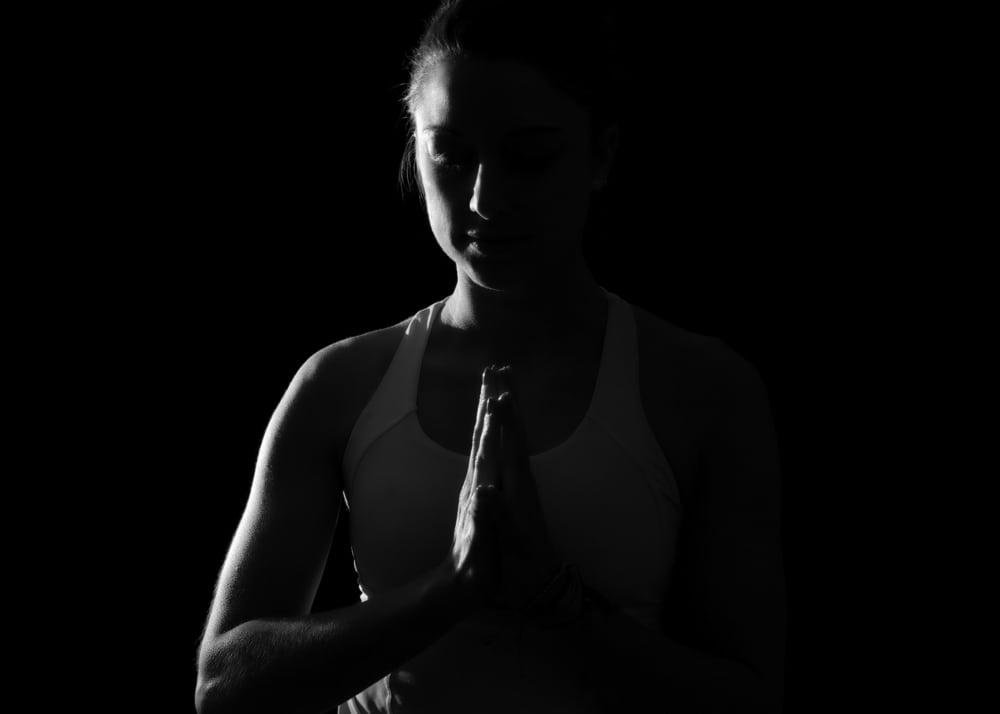Welcome to the Klesha’s Course!
Are you ready to embark on a transformative journey through the ancient teachings of yoga philosophy? Join us in our immersive course, “Kleshas,” where you’ll not only deepen your understanding of these profound concepts but also learn how to guide others on their path to self-discovery.
1. Kleshas Introduction: A Foundation for Transformation
Begin your exploration by grounding yourself in the teachings of the Kleshas. These fundamental principles form the bedrock of yoga philosophy, setting the stage for your enlightening journey ahead.
2. Avidya: Illuminating Spiritual Ignorance
Dive deep into the concept of Avidya, the veil of spiritual ignorance that can obscure our true selves. Equip yourself to lead others through the exploration of this vital premise of yoga philosophy, guiding them toward clarity and self-awareness.
3. Asmita: Unmasking Egoism and False Identity
Uncover the layers of Asmita, the egoism and false identity that often cloud our perceptions. Gain the tools to help your students peel back these layers and discover their authentic selves.
4. Raga & Dvesha: Balancing Grasping and Repulsion
Explore the intricate dynamics of Raga (grasping) and Dvesha (repulsion). Learn to navigate these forces within yourself and prepare to guide your students in their exploration, fostering balance and harmony.
5. Abhinivesha: Liberation from Clinging to the Body
Examine Abhinivesha, the tendency to cling to the physical body. Discover how to free yourself and your students from this attachment, opening the door to greater spiritual growth and self-realization.
6. Weakening Kleshas: Demystifying Sutras 2.10 and 2.11
Demystify the dense subjects of Sutras 2.10 and 2.11. We’ll break them down into digestible components, making it easier for you and your students to examine and absorb these profound teachings.
7. Kriya Yoga: The Path of Action
Delve into the transformative power of Kriya Yoga, the Yoga of Action. Understand why its components are introduced in sutras 2.1 and 2.2 and revisit it later in the section on niyamas. Despite the concise nature of the Yoga Sutras, we’ll unveil the depth of its wisdom.
Ready to embark on this enlightening journey? Our course, “Kleshas,” is designed not just to inform but to empower you to lead others on a path of self-discovery and transformation. Join us and unlock the wisdom within. Start your journey today
[bbp-single-forum id=16858]
Kleshas

Avidya
- Visit Avidya (Spiritual Ignorance) 1 time
- Reply to Avidya (Spiritual Ignorance) topic 1 time
- Enroll in course Kleshas 1 time

Asmita
- Visit Asmita (False Identity or Egoism) 1 time
- Reply to Asmita (False Identity or Egoism) topic 1 time
- Enroll in course Kleshas 1 time

Raga + Dvesha
- Visit Raga & Dvesha (Grasping & Repulsion) 1 time
- Reply to Raga & Dvesha (Grasping & Repulsion) topic 1 time
- Enroll in course Kleshas 1 time

Abhinivesha
- Visit Abhinivesha (Clinging to the Body) 1 time
- Reply to Abhinivesha (Clinging to the Body) topic 1 time
- Enroll in course Kleshas 1 time

Weakening Kleshas
- Visit Weakening Kleshas 1 time
- Reply to Weakening Kleshas topic 1 time
- Enroll in course Kleshas 1 time

Kriya Yoga
- Visit Kriya Yoga (Yoga of Action) 1 time
- Reply to Kriya Yoga (Yoga of Action) topic 1 time
- Enroll in course Kleshas 1 time
Introduction
“Thank you all for joining me this Friday evening. Your presence here means a lot, especially on a moon day. Interestingly, we don’t observe moon days at our yoga shala. I used to shift them to Mondays or Fridays for convenience, but eventually, I realized it was time for a change. Any Ashtanga practitioners here? How about those who haven’t practiced Ashtanga before? Great!”
Engagement
“Now, let’s dive into our topic for today. Have any of you explored the Yoga Sutras? No need to worry; I won’t be grading you on this. I personally didn’t delve into this material until I’d been practicing for several years.”
The Significance of Kleshas
“The concept of Kleshas is incredibly valuable, especially in the context of yoga, particularly Ashtanga yoga. Ashtanga yoga’s eight limbs are not just a linear path to mastery, but rather, they are like an all-terrain vehicle that helps us ascend the metaphorical mountain of self-improvement.”
Explanation of the Eight Limbs of Yoga
“Let’s briefly go over the eight limbs, so we’re all on the same page. First, we have the Yamas, which are like guidelines for ethical living. They include principles such as not causing harm, not stealing, moderation in desires, ethical energy management, and more.”
“Next up are the Niyamas, which focus on how we treat ourselves. These include cultivating contentment (santosha), self-discipline (tapas), self-study (Svadhyaya), and surrender to something greater (Ishvara Pranidhani). While these concepts can have religious connotations, I want to emphasize that I’m presenting them in a secular context.”
“Moving forward, we come to Asana, which most of us are familiar with—the physical postures we assume. Think of it as how you’re ‘sitting’ in the world.”
“Then, we delve into the more subtle aspects, starting with Pranayama, which involves breath control or regulating our life force energy.”
Connecting Concepts
“Interestingly, there’s a connection between Pranayama and Yama number four, Brahmacharya, which encourages us not to waste our energy. Pranayama, in a way, reinforces this idea of controlling our life force energy.”
Mysore Practice
“Now, I’m curious how many of you have a Mysore practice? This is where we go even deeper into the Ashtanga system.”
Introduction to Mysore Style Practice
“Now, let’s talk about Mysore-style practice. How many of you are familiar with this self-guided approach? In Mysore-style, there isn’t a teacher directing your every move; it’s more self-guided, encouraging autonomy. It’s about internalizing your practice and becoming your own guide.”
Internalization of the Senses
“This internalization process involves a deeper connection with your senses. We’ll explore this more during the weekend. It’s like creating a mental map for your proprioceptive abilities, understanding how you inhabit your body, and delving into your interoceptive abilities, sensing your inner states.”
Absorption and Concentration
“As we immerse ourselves in this process, we can become absorbed in our practice for longer periods. Concentration deepens, and we move beyond merely doing poses for a few breaths before our minds wander. It’s those moments when you’re in the flow that make a yoga practice truly rewarding.”
The Seventh Limb: Meditation
“This absorption or flow state leads us to the seventh limb of yoga, which is meditation. Meditation requires an object of focus, such as breath, bandha (though I prefer to think of it as posture), and drishti (gaze). These elements combine to set the conditions for meditation.”
Emergence and Insights
“Through meditation, we gain insights. Think of it as two systems, yoga practice, and meditation, interacting, creating feedback loops, and yielding an emergence greater than the sum of their parts. This insight is a valuable aspect of our practice.”
Introduction to Kriya Yoga
“Now, let’s dive into book two of the Yoga Sutras, specifically Sadhana Pada, which introduces the concept of Kriya Yoga. Kriya Yoga is more than just internal cleansing; it’s like mental ‘gauze swallowing.’ It’s about pulling out the mental gauze, examining it, and realizing when something’s amiss.”
Components of Kriya Yoga
“Kriya Yoga is built on the principles of tapas (heat or friction), svadhyaya (self-study), and Ishvara Pranidhani (surrender to something greater). Tapas is the heat or friction generated in our practice. It’s easy to see how this relates to the concept of friction and heat in the Sanskrit language.”
Introduction to the Kleshas
“Now, let’s delve into the Kleshas, the obstacles to yoga. These are the things that make us flinch, that hinder our progress on the yogic path. They are the challenges we face in understanding ourselves and the world around us.”
Understanding Asmita
“One of the Kleshas is Asmita, the sense of self. It’s when we forget our true potential, our innate power, and we get caught up in limited self-identifications. This can lead us to believe we are defined solely by our mistakes and flaws.”
The Role of Ahamkara
“Ahamkara, the ‘I-maker,’ is essential in creating our identity. It’s what gives us our sense of self, including our likes and dislikes. While it’s natural to have preferences, getting too attached to our identity can become an obstacle to yoga.”
Exploring Raga and Dvesha
“Within the Kleshas, we find Raga and Dvesha, our likes and dislikes, compulsions, and revulsions. These are often the more superficial but frequent obstacles we encounter. They can lead to attachments and aversions, causing suffering.”
Fear of Death (Abhinavesha)
“Another Klesha is Abhinavesha, which relates to our fear of death or attachment to the physical body. It’s not just about fearing death itself but clinging to the idea of having a physical form.”
Avidya – The Root Klesha
“At the root of all these Kleshas is Avidya, the misunderstanding or misapprehension of who we truly are. It’s the confusion that arises when we mistake the not-self for the self, pleasure for pain, and the impermanent as permanent. Avidya is the source of our suffering.”
The Suffering Caused by the Kleshas
“Ultimately, all these Kleshas bring suffering. Our attachments and aversions can lead to frustration and disappointment when we don’t get what we like. The misunderstanding of our true selves can make us feel limited and bound by our flaws.”
The Nature of Suffering:
“And ultimately, and this is why I think it begins to matter, is like, all of these really just make us suffer. Our likes make us suffer because you will not always get what you like, and if you can’t handle not getting what you like, you’re going to be pissed a lot.”
Patience with Dislikes:
“Some people really have no patience for their dislikes. We know them. Lots of suffering. Lots of suffering there.”
Aging and Mortality:
“As my parents age, I am certainly… Reckoning with Ahbinivesha, fear of death, not my own, but perhaps also my own in reflection of my folks’ mortality.”
Avidya (Ignorance) and Misidentification:
“And for sure I can see in avidya, a suffering that can arise by a misidentification of the self for the not self, meaning that I think that I am just my likes and my dislikes, and as such, when I am not getting what I want one way or the other, I can’t break out of that trap.”
Kriya Yoga in Ashtanga:
“These are the obstacles. These are the obstacles to yoga and Kriya Yoga is what we do on our mat. Kriya Yoga being again, Tapas and Svadhyaya, Ishvara Pranidhani.”
Self-Reflection Through Practice:
“What we begin to see when we practice is the stuff that makes us flinch. It shows us what we’re drawn to and it shows us what we push away from. And it becomes a place where we can practice doing it anyway, whether you like it or not.”
The Mutability of Likes and Dislikes:
“And what we can see is that oftentimes that our likes and our dislikes are, they’re changeable, they’re mutable in this way.”
Avidya and the Misconception of Permanence:
“One of the forms that avidya takes is a misidentification of things that are impermanent as permanent. I’m always going to dislike this. I’m always going to like this. And what Ashtanga Yoga in particular asks is for you to suspend your disbelief for a hot second. See what happens. Give it a try.”
Insight and Meditation:
“I really like the term insight for meditation. Maybe it’s because we have the Insight Meditation Center of Washington which is a really wonderful place.”
Self-Reflection and Avoidance:
“What kind of do you trust what’s about to come out of your mouth when you’re like this? Do you? Yeah. Glacius! Glacius! Maybe if you spot… Some of the tells early, they show up a little less hard.”
The Four Agreements and Self-Perception:
“None of this is about you, but everything is about you. Like the stuff that you’re feeling is absolutely about you and nothing that anyone else is feeling is inherently. It’s all about them.”
Perfection and Self-Acceptance:
“I love the idea that we’re already perfect. We’re just trying to get rid of all of the poisons of conditioned existence that have caused us to dim our shine.”
Nervous System and Trauma:
“I think there’s a ton of trauma. I don’t think anyone makes it into their adult life without having nervous system overload.”
Fear of Death and Aversion:
“And what does it create? What does a fear of death create inside of ourselves? Aversion.”
Honesty and Compassion:
“That was huge for me. Same. I started practicing when I was about 18, 19. I started pretty young, I was in college… I can remember laughing and me I’m sure it was a slow build. But somehow the awareness of the pain that I was causing myself because of how I was treating myself… You don’t want to do it anymore.”
Individual Challenges and Preferences:
“Maybe you guys are like, have a yoga pose that you love to pieces. Maybe you have one that you hate to pieces. But I find that those guys are oftentimes some of our best teaching tools… Do you guys have any yoga poses that are like that for you?”
Avoiding Hubris:
“And I’m still not going to care that — and it’s okay. And this is part of the game. And maybe we build a thicker skin about it.”
Self-Improvement and Relationships:
“The ultimate goal is to improve one’s relationship with oneself and others… fostering self-compassion.”
Letting Go and Practicing Detachment:
“Holding on to all those feelings, it’s, on some level, we know it’s a waste of time. We just do.”
“And drop, dropping our baggage, dropping our malarkey, our narratives, the stuff we want to hold on to, it’s so tough. But we can practice it, and we practice it right here.”
“You practice it by doing one more yoga pose, or one less yoga pose.”
“You practice it by taking your teacher’s advice sometimes. And then, I think sometimes we practice it by not taking our teacher’s advice and seeing how that sits with us. And there’s nothing transgressive about that. It’s a way of fostering autonomy.”
Introduction to Kriya Yoga:
“Does this, and this is the process of Kriya Yoga.”
Understanding the Role of Tapas and Friction:
“Tapas inherently requires friction. The heat building.”
“And I work with a lot of Type A executives. Like a lot of them and they are so tightly wound. And do you know, they want to push so hard and I’m just like, slow down. And they’re like, but I want the hard stuff. And all I can say is I think a slowing down will be quite challenging for you.”
Recognizing Individual Triggers:
“The things that are triggering or that get our goat. They’re not the same 1, 1, and we all can need a little bit of different tempering.”
Benefits of Self-Guided Autonomous Practice:
“That’s why a self-guided autonomous practice with good leadership and collaborative assistance can be so meaningful because in the lab of our own body and our own experience, we can find what feels true to us.”
“And then we can ask ourselves, is it true? And this is, and it’s a safe place to reckon with that.”
The Ancient Roots of Yoga Practices:
“What’s important there is that like the chant is like, Hey, maybe learn together and maybe enrich together.”
“This chant is a student-teacher chant, and I love the antiquity of the Rig Veda because it lets us understand that there was a relationship between these texts and these practices that go back.”
Navigating Challenges and Self-Reflection:
“How many people do you know that are going around questioning their own thoughts this way?”
“But even in just that chant, it’s okay, there is no specific teacher here. There’s no specific student here. All there is an environment for learning together. And that there is an inherent necessity of friction for that learning process to occur.”
Embracing Lifelong Learning:
“I just didn’t know that there was anything else to learn about myself, but here it is.”
“And that’s pretty neat to me.”
“And little did I know, and I think I’m here to say that, in fact, we don’t need the mat to practice our Kriya Yoga, and it is so self-evident, this practice, that once you begin to participate in it a little bit, you can’t help but want to continue participating in it, because the world just looks entirely different, just changes, everything is dramatic, nothing is completely impossible anymore.”
The Essence of Freedom and Liberation:
“What does freedom feel like? The absence of bondage, it sounds an awful lot like, like the freedom from the suffering that we’re talking about.”
“And it’s so inconvenient for us, but we only get really clear on how bad we were hurting once it starts to ease up.”
The Purpose of Ashtanga Yoga and Personal Growth:
“And I’m here to say that, in fact, we don’t need the mat to practice our Kriya Yoga.”
“Once you’re free, you gotta get other people free.”
Appreciating the Journey and Its Purpose:
“I wanted that for others. I couldn’t keep that to myself. Cause all I could think of was like, boy, if it was, if it worked that well on me, it was, it’s going to work great on other people too.”
Understanding the Vehicle of Yoga Practice:
“Those are just like the ways and the means of getting to the goods.”

